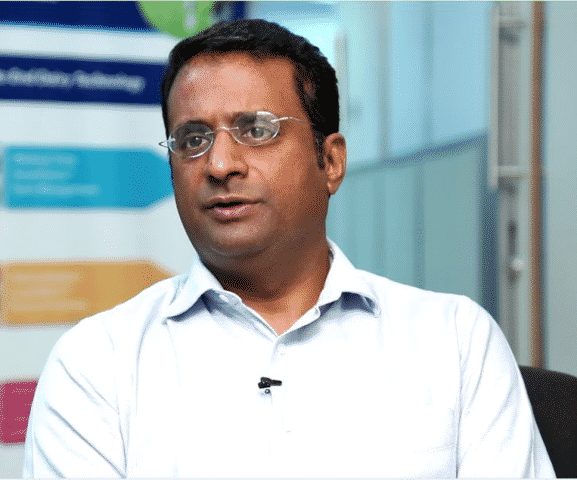Technology
The Dairy Industry underwent digitization to ensure uninterrupted supply chain operations: Ranjith Mukundan
The Indian dairy industry is a $225 billion industry, accounting for every fifth rupee generated in the farm sector. It has also been experiencing an unprecedented growth phase (with per capita consumption increasing at more than 3x the global average)- driven by the rising income levels in the country and the reliance on milk as a key protein source.
There is a strong unmet demand for high-quality products, with customers often willing to shell out a significant price premium for differentiated offerings. However, structural deficiencies prevent unlocking the true value of this sector while India is the global leader in milk production it ranks only 93rd in productivity.
More than 76 million households are engaged in dairy farming, but a vast majority of them have only 2-3 animals. These unique circumstances make it extremely difficult for a dairy to set up a reliable & profitable procurement network at scale. The low yield per animal adversely impacts the profitability of the marginal dairy farmers, while the lack of a proper ecosystem providing credit & insurance restricts the farmers from investing and prospering to dairy entrepreneurs.
Ranjith Mukundan, Co-Founder of Stellapps, in an exclusive interaction with My Big Plunge sheds light on the power of digital transformation on the supply chain:
How has the ongoing COVID-19 pandemic impacted the dairy industry? Please elaborate?
The pandemic posed several challenges to the dairy industry. Balancing surplus milk collection to decreased demand, ensuring uninterrupted supply chain operations, effective workforce management and safe distribution to end consumers are a few of them. Demand for milk and milk products plunged by about 30% due to decreased demand from HORECA segment initially, but it picked up pace in the value-added products. Butter, paneer ghee, cheese and milk powder saw demand rise 10-50%. Due to the pandemic, more consumers are now demanding hygienic, unadulterated dairy products, creating a need for traceability in the supply chain.
How did the industry meet up and face the challenges brought in by COVID-19 in terms of supply chain?
The industry took to digitization among other measures to ensure uninterrupted supply chain operations. Many dairy processors struggled to balance their input and output as consumption dipped and milk collection surged. Dairy processors used the data and analytics offered digital solutions to make informed decisions and balance their procurement. Digitization of the supply chain also enabled dairy officials to easily monitor procurement activities at the ground in real-time from the safety of their homes.
Were the stakeholders initially reluctant to adopt digital means?
We saw an increase in inbound queries and increased adoption of digital technology during the pandemic. The Indian dairy sector had warmed up to digitization due to the various benefits digital solutions offered. The pandemic stressed the importance of digitization for ensuring smooth supply chain operations, enhancing productivity & quality, and enabling traceability. Dairy processors who had already adopted digital technologies were able to quickly adapt to the COVID situation by monitoring their operations remotely in real-time.
Are digital solutions expensive? How did the industry cope?
The return on investments for digital solutions, far outweigh the expense incurred. Digital solutions help dairy players improve productivity, enhance quality, and enable traceability. Digitization can check adulteration, pilferage, and other malpractices by enabling real-time monitoring and automated escalations. It also boosts efficiency while cutting costs. Right through the pandemic, Stellapps smartMoo digitization stack enabled dairy processors across the country to procure milk – including grading, pricing, and farmer payments amidst lockdown in a contactless manner. Stellapps end to end tech stack also allowed the dairies to ensure that their customers continued to receive safe, traceable, and high-quality milk. Currently, we have digitized over 35000 villages touching 3 million dairy farmers & 200+ dairy processors all over India.
What about dairy farmers? Have they also adopted these technologies?
Whenever a dairy company adopted Stellapps solutions, farmer income also shot up. Automated milk procurement checks adulteration, pilferage, and corruption by collection agents. It increases milk quality and reduces milk rejection rates. This leads to an increase in income for the farmers. Hence, farmers have been quick to adopt our digital solutions.
Also Read: Tech firms embrace WFH 2.0 as delta variant drives COVID-19 cases across the world
Stellapps farm improvement and herd management solutions have helped farmers monitor cattle health, access timely veterinary services, and avail quality cattle nutrition. Stellapps mooPay FinTech solution offers digital payments, credit, cash withdrawal, banking, and insurance solutions to farmers. Through Stellapps’ milk pouring based credit score, mooScore, new to credit farmers have found it easier to avail loans from formal sources. Stellapps digital ecosystem approach helped farmers to easily access value-added services which lead to improvement in yield, farm productivity, and milk quality. During the pandemic, Stellapps enabled farmers to sell their milk and get digitally paid regularly despite tough market situations. Stellapps also enabled farmers to sell their milk via its tech platform and facilitated hassle-free credit to these smallholder dairy farmers, allowing them to tide over the economic distress brought about by the pandemic.
What is the outlook of the industry?
The outlook for the dairy industry is positively geared towards digital technology adoption. The dairy sector has already seen the benefits that digitization can deliver. The coming years are likely to witness the digital revolution of the Indian dairy sector, with the increasing adoption of digitization and automation. With consumers demanding better quality and hygiene parameters, tech play will become vital to dairy brands to ensure supply chain traceability.









































Pingback: Apple has launched GarageBand for iOS and iPadOS.
Pingback: There could be a surge in auction of retail assets, such as jewelry and cars